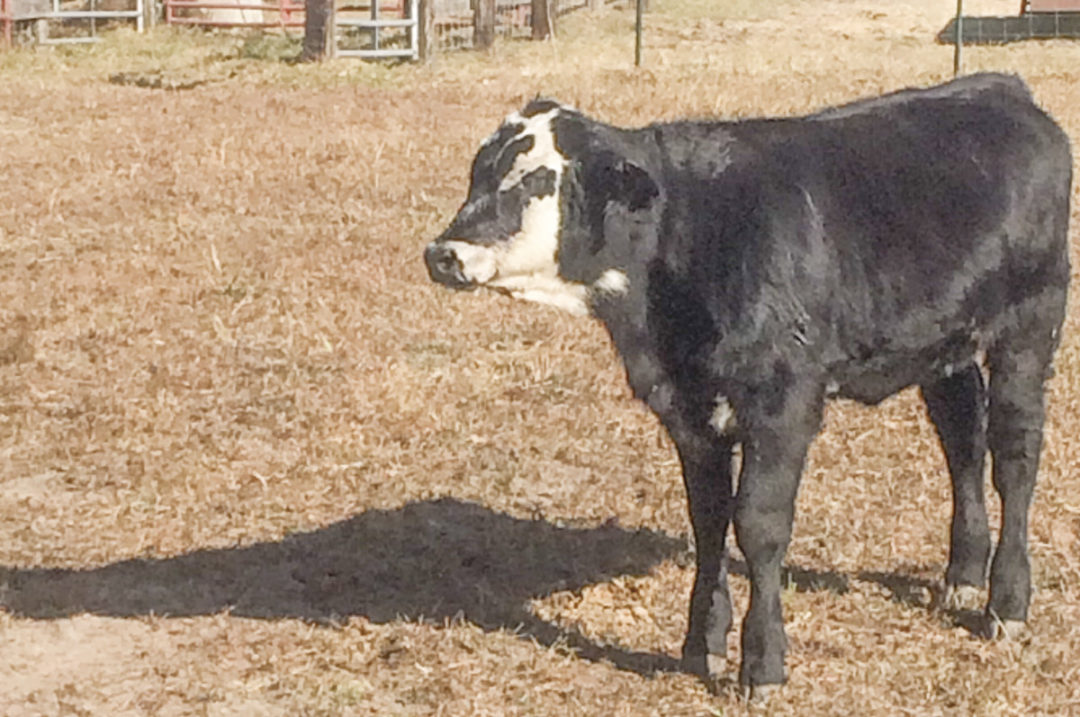Most folks think summertime is typically a time to relax for cattle owners. If we’ve had sufficient rain and grass is good, we can turn cows out and not worry too much except to check water, fences and put out summer mineral. However, there are a few calf diseases that can change those plans. Summer nursing calf pneumonia, enterotoxemia and pinkeye can have a severe impact on calf health and weight, and some can cause calf death if not identified and treated in time.
When calves nurse colostrum, they absorb the maternal antibodies. This is the primary source of protective immunity for the calf in the first 60 to 90 days of life. However, the maternal antibodies decline rapidly after 60 days, so the calf’s own immune system needs to be working by 2 months old. Traditional recommendations were to vaccinate calves after 4 to 5 months old, which means there was a gap in disease protection of almost three months. For some closed herds with very little exposure, this may not be a high risk. However, for a herd that brings in even a new bull from another herd (even a herd from the same owner) or other herd additions, this could lead to exposure for the calf and increase risk of disease.
Summer pneumonia
Summer calf respiratory disease is often a combination of viruses, bacteria and management or environment stress. The bacteria primarily responsible for bovine pneumonia are mannheimia and pasteurella. These are actually normally present in the upper respiratory tract of cattle and are passed on to the calf by its mama early on. They usually don’t cause any trouble unless there is a summer stressor, such as viral infection, drought leading to poor nutrition, really dusty conditions, high parasite infestation, heavy fly irritation leading to cattle bunching or co-infection with another respiratory bug like mycoplasma. Viruses such as bovine respiratory syncytial virus (BRSV), bovine herpes virus (IBR), or bovine viral diarrhea virus (BVD) can trigger pneumonia any time. IBR, also known as infectious rhinotracheitis, can be carried by some cows even after they have been vaccinated. BVD can be a constant challenge if there are persistently infected (PI) carriers in the herd. BVD can cause other problems like reproductive failure or abortion, and calves could be born with defects or deformities. If these are present, it would be a good idea to test for BVD.
If there has been a history of summer pneumonia, or calves that could be at risk due to exposure, the best approach is to vaccinate by 2 to 3 months old or about the time cows are turned in with a bull. If calves are vaccinated before bulls are introduced to the cows, then producers can easily use a modified-live (MLV) virus vaccine containing IBR, BVD 1 and 2, BRSV and PI3. If MLV isn’t preferred or cows aren’t vaccinated, then producers need to use a killed virus (KV) vaccine according to label. KV vaccines require a priming dose and booster dose four to five weeks later, so calves will need to be gathered and sorted again. Some people like to use intranasal vaccines, which can stimulate good immunity in the mucus lining of the upper airways, but they don’t provide systemic protection like injectable vaccines. Some herds could benefit from using a mannheimia/pastuerella vaccine combination also. That is also a good time to give a clostridial 7-way (also known as blackleg) to prevent blackleg and enterotoxemia. Some producers include a pinkeye vaccine too, but that’s a lot of vaccines on a naïve calf at once. It might be more beneficial to give 7-way and then come back later with a separate pinkeye vaccine.
When sorting calves for herd work or other things like estrus synchronization, notice the amount of dust stirred up. Young calves are breathing this dust in and it's irritating to their eyes. While we can’t avoid some dust, it’s important to be aware of its possible detrimental impact on calves’ respiratory tract.
Pinkeye
Pinkeye is a frustrating disease that usually occurs during the summer. It can lead to damaged eyes, severe weight loss and even blind calves, if not treated in time. Flies are often part of the problem because face flies irritate the eyes and carry the bacteria often associated with pinkeye, Moraxella spp., between animals. Horn flies cause cattle to bunch for protection, which makes travel between animals easier for flies. Calves often don’t nurse as much when cows are bunched, so nutrition isn’t optimal then either. Controlling flies, vaccinating against pinkeye and reducing irritants like tall grass seedheads and weeds which injure eyes can help reduce pinkeye. Treating cattle at the first signs of pinkeye, plus controlling flies and vaccinating to increase resistance and reduce spread is critical for early control.
Enterotoxemia
Another common summertime calf problem that often causes sudden death in calves is enterotoxemia (also called overeating disease) caused by Clostridium perfringens toxins C and D. The vaccine is included in the blackleg vaccine, so vaccinating with a 7-way clostridial vaccine is good to protect against multiple clostridial diseases. Most of the time, producers find a really good growing calf dead in the pasture in the early morning. C. perfringens secrete toxins in the gut that cause gut necrosis and calf death. These calves often show no signs of illness, but sometimes the calf may show colic or gut pain signs like lying down and getting up frequently or kicking at his abdomen. Immediate treatment is required. Vaccinating calves by 2 to 3 months old and again by weaning should help reduce the incidence of blackleg or enterotoxemia. Some veterinarians also recommend vaccinating calves with blackleg shortly after birth.
Early treatment is key
If summer pneumonia or any calfhood diseases occur, early treatment is critical to treatment success. Calf disease will progress much faster during the heat of summer than during cooler times of the year. The heat also can cause dehydration, which may reduce the effectiveness of the antibiotic or other treatments. In some cases, calves may also require oral electrolytes to aid in recovery. If left untreated or treated late, some calves may develop permanent lung damage and never fully recover from pneumonia. Keeping appropriate antibiotics on hand to use as needed requires planning and often a conversation with your veterinarian if producers want to use prescription antimicrobials or things like flunixine, which is a non-steroidal anti-inflammatory drug (NSAID) like aspirin, to help reduce fever and pain associated with infections.
Using the right drug for the treatment is important. Not all drugs are effective for all infections in the lungs or intestinal tract because not all bacteria respond the same to the antibiotic. Some bacteria are naturally resistant to some drugs. Knowing which drug to use and when is critical if calves are going to recover.
Having a conversation with your veterinarian ahead of time and having a prevention plan including proper vaccinations are important to beef production success. The summer may be here, but it’s no time to relax in the cow business. Keeping a close eye on the calves when we are checking the water and putting out mineral is important to catch calf health problems early. Early treatment is the best chance for successful treatment and healthy calves.









